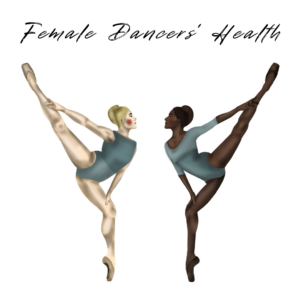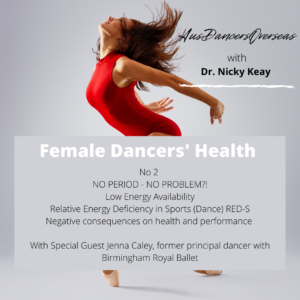Course no 2: No period – no problem?! Low energy availability, relative energy deficiency in sport + dance, and secondary amenorrhea in dance. With special guest: Jenna Caley, former principal dancer of Birmingham Royal Ballet, and how RED-S affected her career.
What happens in a dancer’s body when periods go MIA? Nicky and Stephanie recently found in their own study that up tp 50% of female dancers have no/no regular periods, and that is extremely concerning. What is the cause? Not what you’ve probably been told ’because you’re moving so much’. Low energy availability/RED-S is an imbalance between energy intake (=food) and energy expenditure (dance, S&C, every day activities like walking or cycling, and every other process that keeps you alive – your heartbeat, your breathing, your metabolism). This imbalance is often fueled by beliefs that still circulate in the dance world, that you’ve possibly been told by a director or teacher, or that you saw somewhere on social media, by diet culture which is prevalent in our daily life, but also by certain personal traits that you may have like perfectionism.
This webinar will help you understand why low energy availability can
- cause negative changes in bone health early in life (osteopenia, osteoporosis) with frequent /recurrent injuries
- negatively affect your cardiovascular (=heart and blood vessels) health and brain health
- negatively affect your immune system
- negatively affect your training adaptation and performance on stage (Feeling like you’re not getting anywhere no matter how many extra hours you spend in the studio?!)
- cause difficulties picking up and memorizing choreography or corrections
- make you feel constantly irritated, in a low mood or anxious
- negatively affecting your body composition, hence your physical appearance
A lack of regular periods is only one sign of low energy availability/RED-S, but it’s an easy to spot one, and definitely one that shouldn’t be ignored!
PLUS: Listen to Jenna and her personal insights into years of low energy availability and how it affected the way she thought about food, how it affected her body image, comments she got during her years of training and as a professional dancer, and why she is now so passionate about creating a much healthier and safer environment for future dancers.
Sign up here


